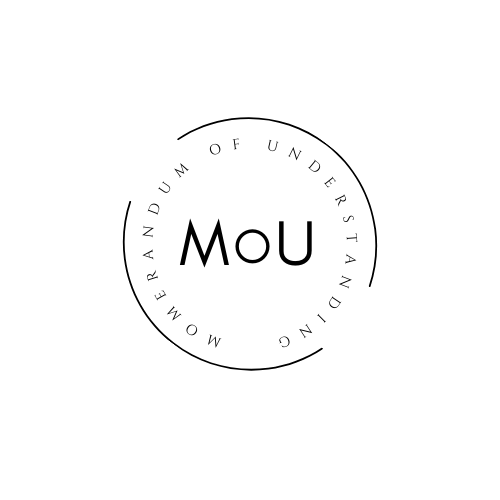ANALYSIS OF THE IMPACT OF AIFTA TOWARD INDONESIAN COFFEE EXPORT TO INDIA
DOI:
https://doi.org/10.21111/mediasi.v1i1.2270Abstract
This study aims to explain the Free Trade ASEAN-India cooperation or better known as AIFTA and its impact on Indonesian coffee exports. Specifically this study aims to find out how the impact of ASEAN-India Free Trade Area on Indonesian domestic industry, especially coffee industry. To get the results as mentioned above, the author uses the concept of free trade and the concept of trade in Islam. The Free Trade Concept will analyze how AIFTA's free trade flows have a major impact on Indonesia's coffee export-import cooperation with India. While the concept of trade views in Islam is only limited to how the view of Islam to a relationship of trade between countries. The data analysis techniques using qualitative techniques. The research method that writer use is descriptive research type which aims to know the development and describe in detail a certain social phenomenon. Technique of collecting data is done by literature study which sourced from valid book, journal, document, and website. The results of this study indicate that the enactment of AIFTA, an increase in the export volume of Indonesian coffee to India which has increased and increased. Increased exports can not be separated from the increasing demand for coffee, especially from India, which is the country's main importer of Indonesian coffee. The increase in demand is influenced by the decline in import duties to India post AIFTA. Based on the results of this study, this study can conclude that the implementation of free trade agreement between ASEAN and India brings many positive effects for cooperation between Indonesia and India. The development of research and development of the coffee industry is a good suggestion to improve the performance of the Indonesian coffee industry in competing on the AIFTA framework. Keywords : AIFTA, Export-Import, Industri Kopi, Indonesia, IndiaReferences
Bibliography
Al-Qur’an
Al-Qur’an Al-Kariim : Al-Hujurat Verse 13.
Thesis
Parongko. Naoto. (2012). “Suatu Analisis Kerja Sama Free Trade Area ASEAN-India dan Pengaruhnya terhadap Industri Domestik Indonesia (Studi Kasus: Industri Kelapa Sawit)â€. Skripsi. FISIP, Ilmu Hubungan Internasional, Universitas Hasannudin, Makassar.
Schumacher. Reinhard. (2012). “Free Trade and Absolute and Comparative Advantage. A Critical Comparison of Two Major Theories of International Tradeâ€. Thesis. Magister, University of Postdam, Germany.
Book
Apridar. 2009. Ekonomi Internasional-Sejarah Teori, Konsep dan Permasalahan dalam Aplikasinya. Yogyakarta: Graha Ilmu.
Sadono Sukirno. 2008. MakroEkonomi Teori Pengantar. Jakarta: PT. Rajagrafindo Persada.
Journal
Burhani, Zainul and Kholid. "Analisis Daya Saing Ekspor Kopi Indonesia, Brazil, Kolombia, dan Vietnam." Jurnal Administrasi Bisnis, Vol. 50 No. 2 September 2017. Page: 190-194.
Norvadewi. (2015). Bisnis dalam Perspektif Islam. on Journal Ekonomi dan Bisnis Islam Al-Tijary. Page. 33-46.
Ratna, Tety, and Eliza. "Analisis Posisi Ekspor Kopi Indonesia."in the Journal : Jom Faperta, Vol.3, No. 1. (2016). Page : 1-7.
Sudjarmoko, B. (2013). “Prospek Pengembangan Industrialisasi Kopi Indonesiaâ€. Dalam Jurnal SIRINOV, Volume 1, No. 3. Page. 99-110.
Internet
Association of Southeast Asian Nations. Annex 1, Agreement on Trade in Goods under the Framework Agreement on Comprehensive Economic Cooperation between the Association of Southeast Asian Nations and the Republic of India. (2009). Retrieved March 27, 2018 from http://www.asean.org/storage/images/archive/22677.pdf accessed on 10:27 WIB. Page 21-26.
BPS Indonesia. (2017). Ekspor Kopi Menurut Negara Tujuan Utama, 2000-2015. https://www.bps.go.id/statictable/2014/09/08/1014/ekspor-kopi-menurut-negara-tujuan-utama-2000-2015.html. (accessed December 26, 2017).
Hadi, Sasmito (Deputi Bidang Statistik Distribusi dan Jasa BPS). Kenapa Indonesia Masih Impor Kopi?. (2017). Retrieved April 12, 2018 from https://kumparan.com/@kumparannews/kenapa-indonesia-masih-impor-kopi accessed on 11:43 WIB.
Idris, M. (2017). India Jadi Ladang Baru Indonesia . (2017). https://finance.detik.com/berita-ekonomi-bisnis/3447695/india-jadi-ladang-ekspor-baru-ri. (accessed December 24, 2017).
Indonesian Trade Promotion Center. Market Brief "Peluang Pasar Produk Kopi Indonesia".(2013). http://djpen.kemendag.go.id/membership/data/files/78671-MB-ITPC-CHENNAI-6-2013.pdf . (accessed February 12, 2018).
International Coffe Organization. Berapa Konsumsi Kopi Indonesia?. (2011-2016). Retrieved April 12, 2018. from https://databoks.katadata.co.id/datapublish/2017/07/03/berapa-konsumsi-kopi-indonesia accessed on 10:55 WIB.
Kementerian Perkebunan Indonesia. “Buku Statistik Kopi 2015-2017.†(2015-2017). http://ditjenbun.pertanian.go.id/tinymcpuk/gambar/file/statistik/2017/Kopi-2015-2017.pdf . Page. 4. Retrieved on April 1, 2018. accessed on 22:21 WIB.
Sekretariat Jenderal Kementerian Pertanian. Outlook Kopi 2016. (2016). http://epublikasi.setjen.pertanian.go.id/epublikasi/outlook/2016/Perkebunan/OUTLOOK%20KOPI%202016/files/assets/common/downloads/OUTLOOK%20KOPI%202016.pdf. Retrieved April 12, 2018. Accessed on 13:42 WIB.
Waluyo. Dee. (2016). 7 Produk Unggulan Ekspor ke India. https://jpp.go.id/ekonomi/perdagangan/300652-7-produk-unggulan-ekspor-ke-india. (accessed December 26, 2017 at 10:20 WIB).





